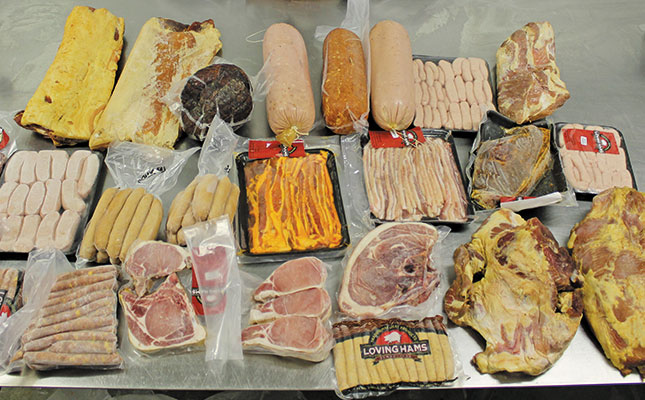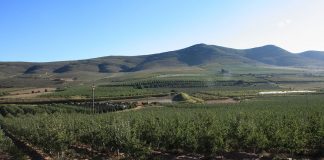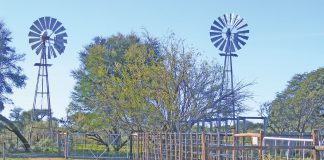
While pork producers are accustomed to the cyclical nature of production, 2016 is likely to go down as one of their most difficult years yet because of the impact of the drought on feed prices.
This is according to James Jenkinson, chairperson of the South African Pork Producers’ Association (Sappo).
“We’ve lost more than 8% of our producers,” he says.
Small-scale farmers are suffering more as they tend to lack access to tools and economies of scale that could act as a buffer, notes Sappo CEO Simon Streicher.
For example, where commercial farmers might mix their own feed or use Safex to protect themselves against price spikes, subsistence farmers have to decide which is more important: feeding themselves or their animals.
Dramatic price rise
The primary cause of the low profit margins in the industry has been the drought, which has seen grain farmers unable to produce decent crops and South Africa turning from a net exporter to a net importer of maize. Feed prices, which account for about 70% of pig farmers’ input costs, have increased by approximately 55% over the past year.
Maize, which forms the base of most pig rations, has almost doubled in price since February 2015, says Jenkinson.
The situation has been exacerbated by cheap imports. South Africa has trade agreements with Europe and the US for the import of pork products.
The country is unable to produce enough pork ribs to satisfy local demand, “so it makes sense to have a trade agreement aimed at addressing this shortfall”, says Streicher.
However, the ratio between the import of ribs and other cuts has changed over the past five years.
At one stage, ribs represented 70% and other cuts only 30% of pork imports from Europe; today, equal volumes of these products are entering the country.
This means that high-value cuts produced in South Africa now have to compete with high-value cuts from other countries.
“The quality of the imported products and ours are quite similar, since we use the same genetics and similar production practices,” says Streicher.
The problem, however, is that the imports are cheaper because production is greatly subsidised in the countries of origin.
Streicher estimates that SA pig farmers could increase production by at least 10% if they were not forced to compete with subsidised products.
Record volumes
The imports not only undermine the country’s pork industry by driving prices down, they make it difficult to predict what will happen in the market.
“The market outlook might look promising, but it changes in a second when we receive pork that we weren’t planning for,” explains Streicher.
“Last year, we imported a record volume of pork and it seems as if we might be heading that way again this year.”
Import protection is not working. Many pork products are subject to import tariffs, but these are based on the value, not the volume, of the products. As a result, exporters are able to send high volumes of cheap meat to South Africa without being penalised, says Streicher.
“Trying to increase protection levels for farmers takes months and Sappo has tried to do so on various occasions over the past five years. Two years ago, for example, the industry had to battle with a glut of pork from Europe after Russia banned imports from the EU.
“The EU at first committed to subsidise the storage of the meat, but after only a few months changed its mind. The result was a huge influx of meat that we didn’t plan for,” he says.
A promising forecast
The domestic pork industry will most probably continue to struggle until May next year, when the bulk of South Africa’s maize harvest starts rolling in, with recovery depending on the size of the harvest. Weather forecasts for the coming season, which start in October, are quite promising so far, according to Jenkinson.
Indications are that there might even be above-normal rainfall. He is therefore hopeful that the industry will be able to climb out of its current low in 2017.
Jenkinson adds that while many producers have left the industry, several large expansions are currently taking place, so the long-term outlook for SA pork production is promising. He knows of at least two 4 500-sow units, which will have the capacity to increase SA production by 10%, that are in the process of being built.
“Hard times like these usually take out the less efficient farmers and, in effect, help to increase the overall efficiency of the industry,” says Jenkinson. “While some farmers go out of business, their
“While some farmers go out of business, their sows are incorporated into other farms so that the overall number of sows in the country has not really declined.”
Farms are simply getting bigger to take advantage of economies of scale, as is the international trend.
Expanding production
According to the latest Bureau of Food and Agriculture Policy Baseline Report, pork production is expected to expand at an annual average rate of 3%. This figure would most probably fluctuate, with the industry experiencing hardly any growth one year and 7% the next, notes Jenkinson.
Pork prices are expected to increase over the next decade as red meat becomes more expensive due to producers rebuilding their herds. Pork consumption is expected to increase by 37% by 2025, while beef consumption is expected to slow by 6%.
The industry is working hard to promote pork consumption, but consumer income is under pressure, says Streicher.
Consumers currently have less money available for buying meat products.
“This might have the negative effect of keeping pork prices low, but might also result in consumers rather buying pork products than more expensive red meat,” he says.
Email Simon Streicher at [email protected].













